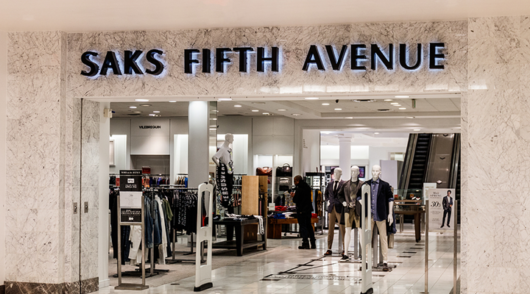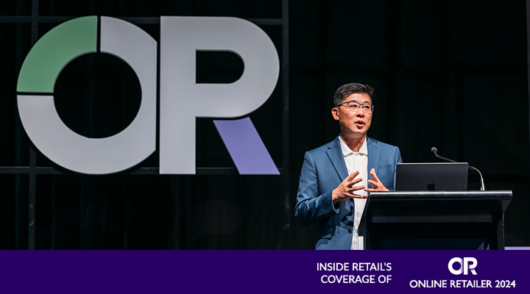Over the past two years, many Australian consumers have reset their expectations of the brand and customer experience. Having endured the pandemic and moved by escalating social and environmental causes, more consumers want to act for the greater good and expect businesses to follow.
Our new Consumer Insights report shows that one in three consumers are now more conscious of shopping from purpose-led brands than they were before the pandemic. The majority also engage with content about a brand’s social purpose, higher among younger shoppers.
We saw some early evidence of this shift in consumer preferences in last year’s Consumer Insights report. We found more people wanting to support local businesses and spend more time with family, friends and in the community.
That’s why in our latest edition we took that one step further, examining consumers’ attitudes on the role, value, and impact of social purpose in businesses. And while there is significant potential to create allies among consumers and forge emotional connections, brands can also lose customers if they get it wrong.
The power of purpose
When we consider a businesses’ purpose in a broad sense, we think about its reason for being beyond just commercial pursuits. For example, Walmart’s purpose is to ‘save people money so they can live better’, Alibaba is seeking to ‘make it easy to do business everywhere’, while Patagonia strives to ‘save our home planet’.
Looking at the different manifestations of brands’ purpose accentuates consumers’ varying priorities. Our research reaffirms that more rational purchasing drivers such as value for money, product quality and convenience are what consumers look for first. Many brands have expressly developed their purpose to satisfy these priorities.
Alongside these are emotional drivers that can elicit a powerful response. While only a small number of consumers said social purpose was their top purchasing priority, 45 per cent say they are proud to be associated with brands that share their values and many actively seek them out.
Balancing purpose and profit
The research also found that just over one in two consumers are willing to pay more to purchase from purpose-led brands, and of these, 31 per cent said they would pay a 10 per cent premium.
In this way, they are collaborators, jointly bearing the additional cost to advance a cause or brand they believe in. Yet every consumer has a limit at which point value considerations may come back into play.
Almost 40 per cent of consumers say they often don’t buy from a purpose-led business because it’s too expensive. This is also where consumer cynicism about brands’ intentions can start to build.
In fact, more than half of Australians believe purpose-led organisations are not genuine and that their main focus is to put profit before purpose. That’s also due to consumers’ own experiences, with 44 per cent saying they have experienced factors that have negatively impacted their relationship with brands. Unethical behaviour and unfair employment practices are the most commonly cited.
So, while many consumers are willing to back a brand’s social purpose, be aware that both an overstated price premium and bad behaviour can turn customers away.
What consumers want
Despite questioning brands’ true intentions, consumers do feel there are natural causes for businesses to support. They also have strong views on how brands should communicate and demonstrate their social purpose.
Two in three consumers say brands should engage employees to mobilise organisation-wide support. Most also agree that businesses need to support category-relevant causes and make a long-term commitment.
Collaborating with customers is also important. Many consumers want brands to seek their input on social purpose and communicate regularly. There is a preference for evidence-based storytelling and personalised content, with existing customers and employees seen as the most credible spokespeople.
So, with most consumers becoming more engaged with a social purpose and willing to hold businesses to account, it’s important to keep relevance and authenticity at the forefront.
Aside from the core benefits of a positive impact, businesses with a genuine social purpose stand to engender greater consumer advocacy and loyalty.
To download your copy of the Consumer Insights Report, visit www.commbank.com.au/consumer-insights.
About CommBank Consumer Insights
CommBank Consumer Insights is an exclusive, wide-ranging analysis of the Australian consumer. This edition examines the role of purpose in consumers’ shopping behaviour and is based on an online quantitative survey conducted by ACA Research on behalf of the Commonwealth Bank. The survey was conducted in July and August 2021 and was completed by 5,639 consumers of goods and services, with each respondent answering questions based on one of the following categories: groceries (n=354), liquor (n=352), fashion (n=352), homewares and household appliances (n=353), DIY, building, garden supplies and hardware (n=350), consumer electronics (n=351), motor vehicle parts and accessories (n=351), health and beauty (n=355), books, gaming, music and media (n=354), recreational goods (n=354), fast food and quick service restaurants (n=355), pubs (n=349), clubs (n=350), accommodation (n=351) and personal care services (n=355). Survey participants were segmented by generation as follows: Gen Z, aged 16-24 years (14%), Gen Y, aged 25-40 years (25%), Gen X, aged 41-56 years (26%), Baby Boomers, aged 57-75 years (27%) and Pre-Boomers, aged 76 years and over (8%). The sample was selected to ensure the results are nationally representative. All statistics and references to consumers in this report are based on the responses to the survey unless otherwise stated.
Things you should know:
The report has been published for general information purposes only. As this information has been prepared without considering your objectives, financial situation or needs, you should, before acting on this information, consider its appropriateness to your circumstances, if necessary, seek professional advice. The Bank believes that the information in the report is correct and any opinions, conclusions or recommendations are reasonably held or made, based on the information available at the time of its compilation, but no representation or warranty, either expressed or implied, is made or provided as to accuracy, reliability or completeness of any statement made in the report. Any projections and forecasts are based on a number of assumptions and estimates and are subject to contingencies and uncertainties. Different assumptions and estimates could result in materially different results. All analysis and views of future market conditions are solely those of the Commonwealth Bank.
Commonwealth Bank of Australia ABN 48 123 123 124 AFSL and Australian Credit Licence 234945.







